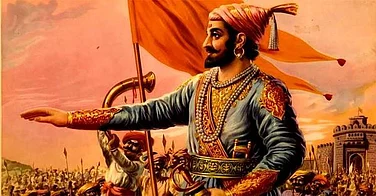Communist Party of Nepal-Maoist Centre (CPN-MC) Chairman Pushpa Kumar Dahal, better known as ‘Prachanda’, on Monday became the Prime Minister of Nepal for the third time.
Dahal was feted and admired for leading the Maoist insurgency during 1996-2006, leading to the end of the Nepali monarchy. A hero to many Nepalis, Dahal lost much of his shine after joining mainstream politics in 2006.
Known as a firebrand revolutionary committed to transforming Nepal’s political landscape, Dahal has proved that ideology and commitment do not come in the way of a power grab. He is currently heading a coalition government that is also supported by the Rashtriya Prajatantra Party (RPP), a group loyal to Nepal’s last King Gyanendra and aims to one day restore the monarchy.
Dahal is ready to embrace his bitterest political opponents if it serves his cause. Significantly, his first two terms as prime minister could not be completed because of internal wranglings within the party and his inability to carry all sections of the party along.
Pushpa Kamal Dahal’s fallout with Nepali Congress
Dahal fought the recently-held Nepal elections in a pre-poll alliance with the Nepali Congress (NC) led by Sher Bahadur Deuba. The NC is the single-largest party and could have managed to form the new government but for Dahal. Deuba and he had come to an agreement to rotate the post of prime minister among themselves. Deuba would initially rule for two and a half years and then pass the mantle on to Dahal.
However, Dahal wanted the first prime ministerial tenure and fell out with the Nepali Congress over this and drove straight to the private residence of Khadga Prasad Sharma Oli, who had headed the opposing coalition.
It is evident that Dahal had already been in talks with the Communist Party of Nepal-Unified Marxist Leninist (CPN-UML) of Oli. Dahal got what he wanted from Oli — to be the Prime Minister for the first two and a half years. Then Oli will head the government. What finally happens remains to be seen as Oli is also not an easy pushover. In fact, the Oli-Dahal experiment has failed in the past.
The past power-sharing pact of Dahal, Oli
In the 2017 national elections, the two largest Communist parties of Nepal —Oli's CPN-UML and Daha's CPN-MC— swept the elections together, winning nearly two-third of all seats. The Nepali Congress was routed in 2017. Yet despite the massive mandate, the government could not last because of the squabbling of the two factions of Oli and Dahal.
Dahal, who was the party leader, was to swap the post of Prime Minister with Oli as per their arrangement, but the Oli refused to make way for Dahal. The result was that the Nepali Congress was finally the winner and Sher Bahadur Deuba became the Prime Minister of Nepal.
Nepalis suffer amid power games, seek fresh faces
The Maoists as well as the Communists have let down the people of Nepal in their quest for power. Yes, the Maoist leaders had put an end to the monarchy and brought in federalism, but battling unemployment, providing health care, and lifting millions from abject poverty remains just on paper. Once in office, the Maoists spent their time working against their opponents within the party.
So it is no wonder that the majority of Nepal’s urban middle class is fed up with the former guerrillas. That is why the people are looking for a new leadership away from the traditional politicians. The fact that former television anchor Rabi Lamichhane of newly-formed Rashtriya Swatantra Party was able to win 20 national seats in Parliament, mainly from the Kathmandu area, indicates people’s hunger for a new kind of politics led by fresh faces.
Lamichhane’s party is part of the coalition government headed by Dahal. He has been sworn in as one of the three Deputy Prime Ministers and as the Home Minister of Nepal in the new government.
How India-China rivalry plays out in Nepal
Many see Nepal’s politics as a tussle between India and China for influence in government. Oli, Prachanda, and the Communists are regarded as pro-China while the Nepali Congress is traditionally regarded as close to India.
While it is true that both Asian rivals want to influence governments in the region, Nepal needs the support of both New Delhi and Beijing.
The Nepali political leaders will play whichever card is needed for survival at a particular point. After India’s blockade of Nepal in 2015, Oli tapped the anti-India sentiment in the country, but he kept his line open to India. Dahal too does the same. Neither Delhi nor Beijing can trust these leaders who can switch sides at a moment's notice.
Finally, these leaders are opportunists and will do what suits their political interests. It is a fact that the Nepali Congress has deep connections with India and is unlikely to take any decision that is harmful to India’s interests. At the same time, the NC cannot ignore China and engages with the Chinese while in power.



























